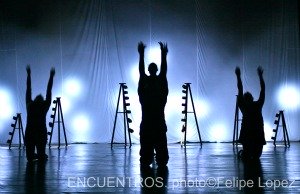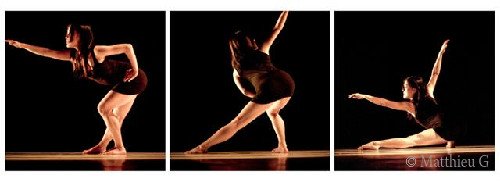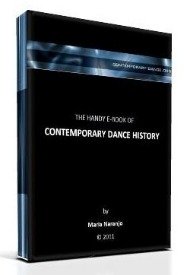THE ART OF CHOREOGRAPHY
Those of us who have been through the process of creating a choreography know that in contemporary dance, a choreographer does a lot more than just composing dance.
Unlike in other scenic arts, a contemporary dance choreographer is usually a general director in charge of making the decisions upon every matter included in her/his creation. In many cases, she or he is its producer, manager and even one of the dancers!
This situation varies according to professional or economical contexts, but it really seems to be that creating contemporary dance choreography is a task of many MANY tasks. But, if we stay closer to the popular meaning of the word itself (choreography), we could say that it refers to the practice of dance composition with human body’s movement.
So, the choreographer’s work is the art of inventing or arranging movement, as well as choosing dramatic structures to organize it or present it to an audience. The art of choreography itself is concerned about movement alone (or dance) before its relationship with costumes, lighting or any other scenic complements.
I know however, that some contemporary dance artists have troubles to think about all those components of a performance separately. I ask my self if this is really an aesthetic point of view or if some choreographers just don’t really want to face movement… (?!)
Now, if we think of the popular current use of the word ‘choreographer’ between contemporary dancers, we’re talking about the BIG CREATIVE HEAD (or HEART if you prefer).
First of all, the profile of a person who composes a contemporary dance piece is usually between the one of a theater director and an orchestra conductor . To decide upon the general organization of its dance, the choreographer chooses or creates movement dramaturgy, whether her/his dance is an abstraction or a story.
S/He chooses dancers as well, considering the ‘taste’ he’d like his piece to have. Remember that there are virtuous dancers, lyrical, mature, acrobatic, young, with all types of features, etc… .
That is for the theatrical side of her/his character…
Concerning her/his ‘conductor’ side, s/he decides how movement will relate to any type of music or sounds (if that’s the case). As contemporary dance is generally accompanied by music… (we dance in the silence too…), the choreographer also needs to have musical knowledge. Now I must say, this is an hypothetical, ideal choreographer… but anyway, he entrusts a musician to create for him, chooses upon already existing pieces or creates music himself.
Before inviting you to a page where you can exercise music analysis for choreographers, I’d like to remind you that the use of music in contemporary dance sometimes differs from its employment in mostly all other types of dance.
In contemporary dance performances, music can be just a background soundscape. This means that movement is not necessarily matching its rhythm or dynamics. This is a weird feature for many audiences, but believe me, you can find it very, very often.
Nevertheless, sometimes we do make use of the music’s structure, rhythm or dynamics when composing choreography. Actually you can find both types of relation to music on contemporary dance stages (sometimes during the same piece).
If you’re one of those choreographers interested in relating your dance to a musical piece, you might want to visit our contemporary dance music page.
Deciding upon costumes for a performance is another one of the choreographer’s responsibilities. As contemporary dance is frequently theatrical, all kind of clothes are accepted for symbolic or aesthetic meanings. But, if a choreographer really takes everything in consideration, he doesn’t forget the dancers sensibility and needs.
Comfortable clothes are more important in contemporary dance as people would normally talk about. If you already now enough about our training ways, you are aware of the fact that what we feel while moving is essential for us.
As a dancer, and after many years of practice, I’d sincerely say that the shape and feel of an outfit can strongly determine our posture or muscular tone (which transforms movement qualities and even shapes). Soft and loose-fitting costumes are highly preferred by contemporary dancers than too tight, rigid or complicated clothes.
In choosing costumes, the choreographer work as a visual artist, as much as he does when working his lightning (if that’s the case), scenography, or any other visual complements. This means that, even if he is following his intuition, he considers their aesthetic values, according to the sense he is constructing. For some purposes he might prioritize symbolic elements that can make the dancer’s performance more difficult (for example a male dancer on heels…!), for others he’ll respond to the movement needs.
Allow me to give you an advice from the dancer I am… (I’ve gone trough difficult experiences with clothes on stage!):
If you’re a choreographer, always remember that DANCING is the priority of your dancers. They’ll be much happier if you choose costumes that facilitate their moving skills (I know, I know… it all depends on your piece’s needs). But, anyway, think that achieving a good balance between the visual and the dancing needs might be the wisest…!

One last word about making choreography…
Remember that dance composition is different from directing. Guiding a group in a dance creation process requires more skills than just knowing how to play with movement SHAPE or QUALITIES.
Some people might think that directing is a matter of common sense, and that choreographers find their working ways during each creative process. Somehow I agree.
Still, I’d like to share some ideas that might help you avoid bad moods… or unsatisfied dancers:
• Keep in mind that your working ‘material’ is made out of human beings. Even if it is important to demand some sweat or discipline, remember that dancing many hours a day can be more exhausting than sitting on an office’s chair… . I just mean that it’s important to measure your dancer’s reserve of energy, in order to plan rehearsals in a more effective and friendlier way. Resting is as important for your dancers as rehearsing, no matter how stressed you feel…
• Start composing with what you think will be the most difficult part of your piece and stop making changes to your choreography as soon as you can. Movement matures in time within your dancer’s memories. The more time they know their dancing parts, the more refined and/or comfortable their movement may be. This applies off course to compositional methods that do not count on improvisation as an important feature of the dance.
• Manage the working time of your dancers in the most professional way your conditions allow. Establish contracts or agreements from the very beginning, according to the timescales of your plan. Their commitment is to dance what you establish. Your commitment is to be consistent with the working program you propose. This should assure that your ‘material’ (dancers…) is in an easy working mood… and that IS very important. (I know what I’m telling you…)
• Avoid the situation of having part of your dancers waiting in the studio, while you work on your choreography with others. Plan your rehearsals and appointments with them so that they won’t be sitting and feeling that they waste their time.
• Be receptive and open minded to the dancers signals. You are reading their bodies constantly. So, take in consideration what they have to propose. Make profit of the richness that each one of them can add to your choreography.
There are several pages about choreography within contemporary-dance.org. You will find tools, methods, recommended books and more related online readings in our page named dance composition.
You know that there are many related topics we can share. For example, some people say that there’s a special phase called ‘incubating’ dance ideas before composing; I haven’ said a word about the role of the choreographer during the performance or production and artistic management…
There’s a lot about creating dance we can talk about. For now, explore the related pages and remember, if contemporary dance choreography is your passion, I’ll be here to share it with you. Don’t be shy to send me your questions, comments or related ideas. I’ll be working on the missing subjects in time.
Related readings on choreography:
Choreographic tools from La Pedroche
THE CHOREOGRAPHER'S MANIFESTO by S. Lifar
What does a contemporary dance choreographer expect from dancers?
Better Niagara on a tightrope by Clive Barnes
Return from Contemporary Dance Choreography
to Contemporary Dance Home Page
The handy e-book of CONTEMPORARY DANCE HISTORY:
The Dance Thinker is our occasional E-zine. Fill in the form below to receive it for free and join us.
Read:
"The Dance Thinker"
BACK ISSUES
Post contemporary dance announcements (workshops, auditions, performances, meetings and important news... it is free.)




